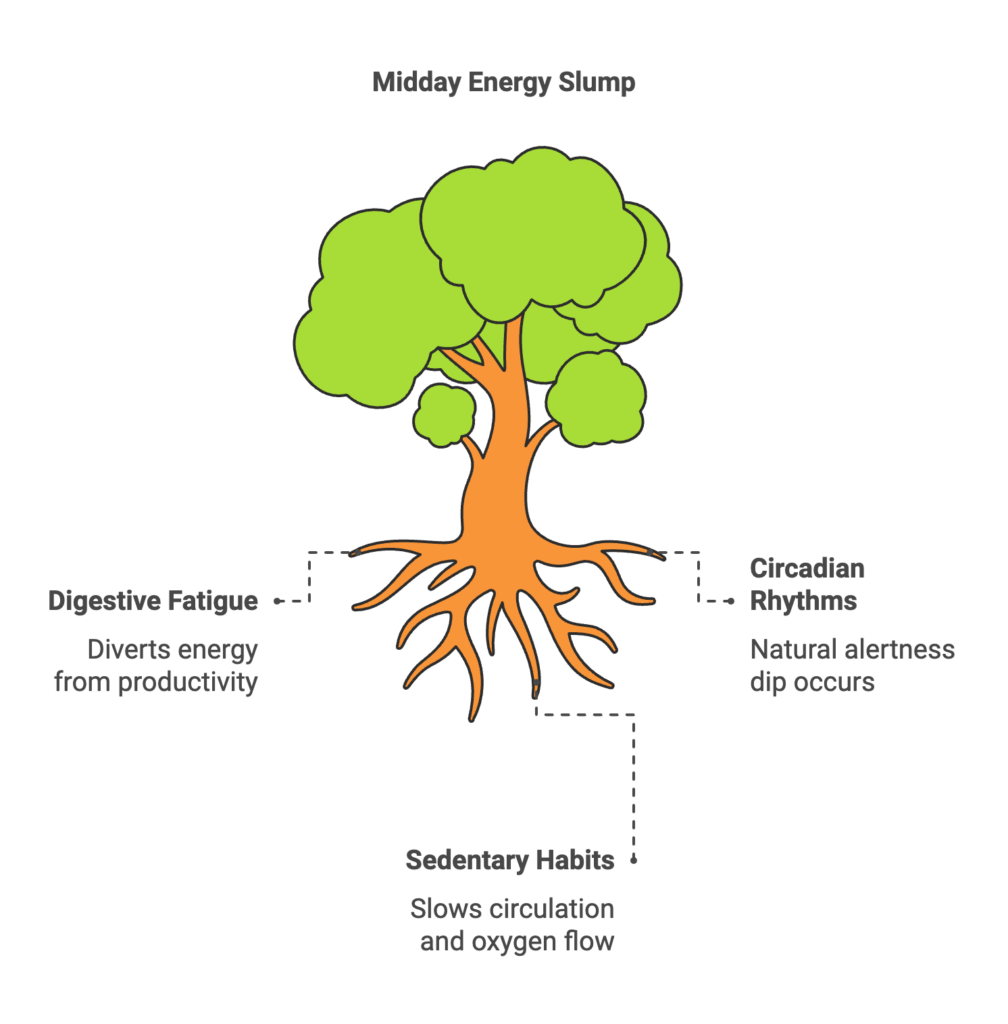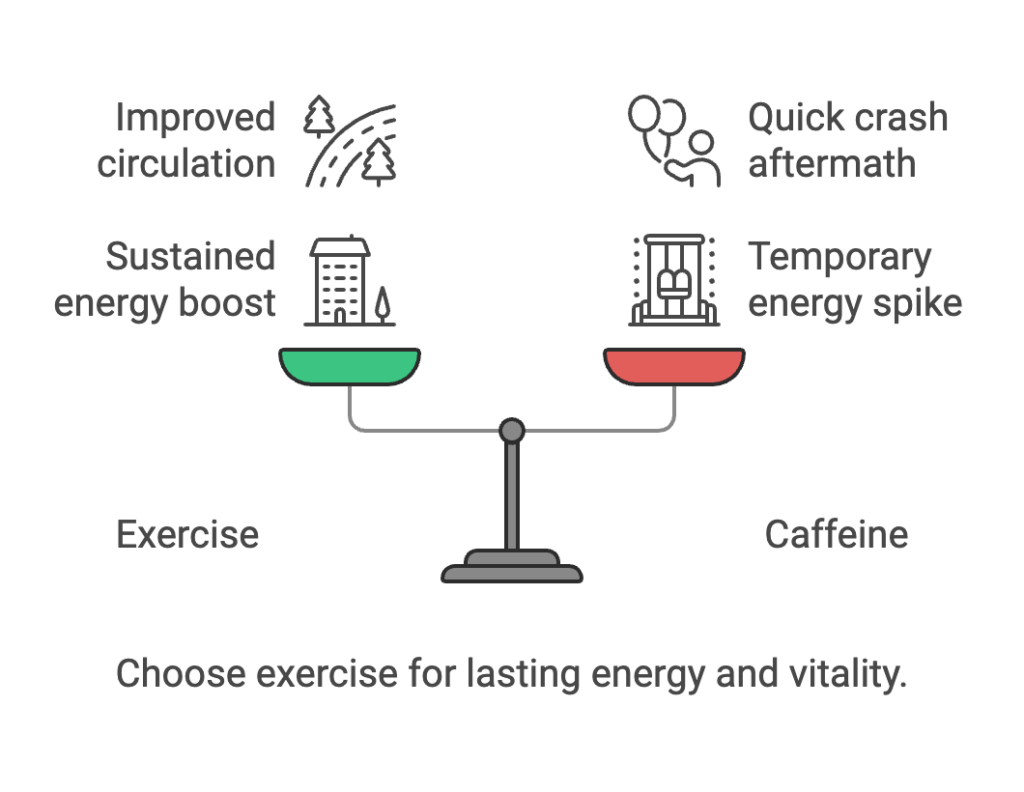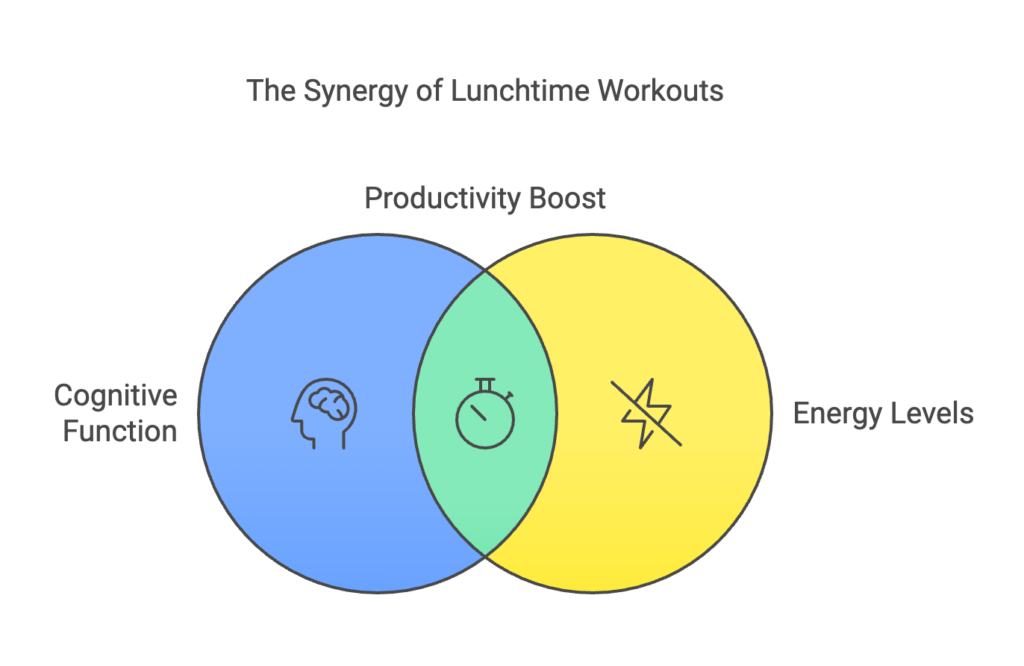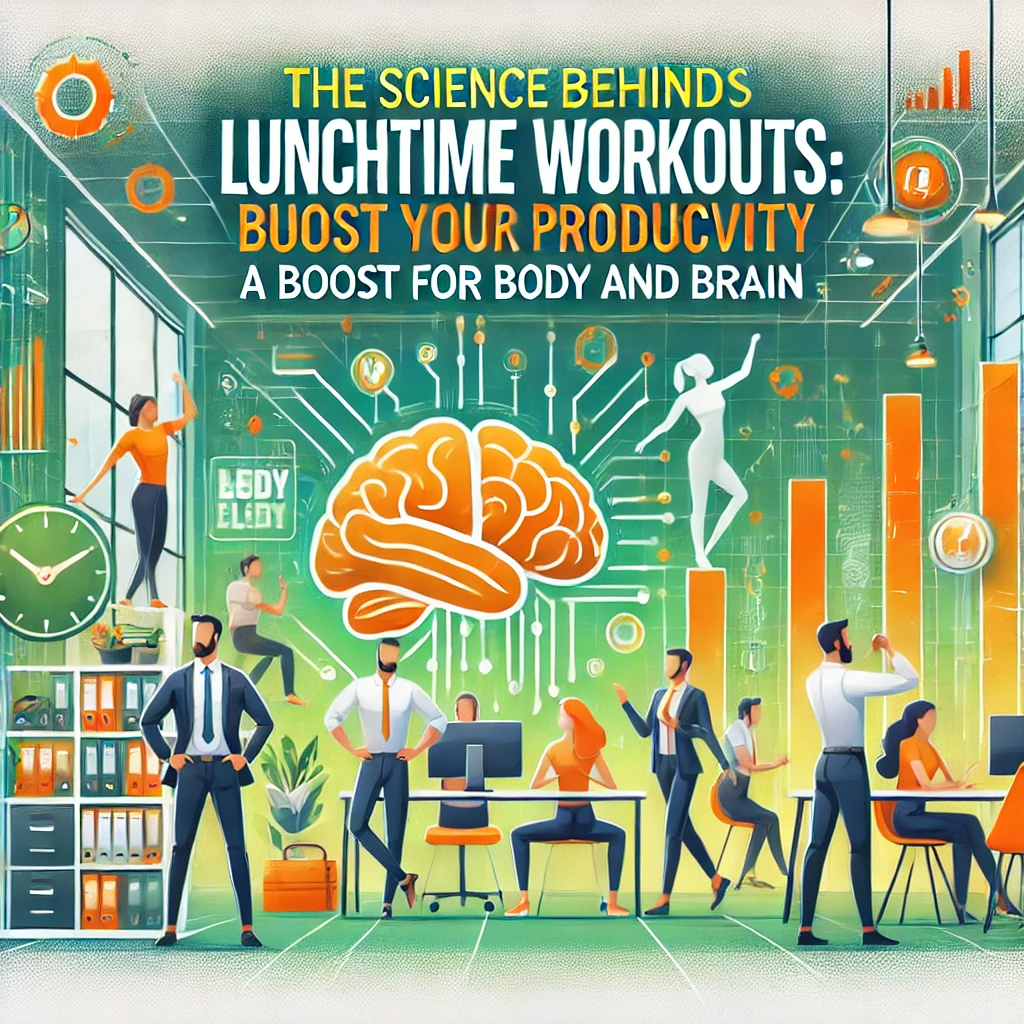Have you ever felt the infamous afternoon slump—the post-lunch dip that makes you want to nap at your desk? It’s a common workplace phenomenon. But what if there was a way to turn that midday fatigue into a surge of energy and focus? Lunchtime workouts are becoming increasingly popular for their ability to re-energize both the body and mind.
In this post, we’ll explore the science behind why short, midday fitness sessions are transformative for cognitive function, energy levels, and mood. We’ll also provide tips for making the most of your lunchtime break, backed by research and practical strategies.
The Problem: The Midday Energy Slump
The hours after lunch can feel like a productivity black hole. This slump is often caused by a combination of factors:
- Digestive Fatigue: Your body diverts energy to digest food, leaving less for other activities.
- Circadian Rhythms: Natural dips in alertness occur in the early afternoon.
- Sedentary Habits: Sitting for hours slows circulation and reduces oxygen flow to the brain.

The result? Diminished focus, slower decision-making, and a lack of motivation.
The Solution: Lunchtime Workouts
Lunchtime workouts counteract these effects by stimulating the body and brain. Even a 20-minute session can improve mental clarity, mood, and overall energy for the rest of the day.
Boosting Cognitive Function
Exercise enhances brain function by increasing blood flow and oxygen delivery. A study published in Frontiers in Aging Neuroscience found that short bouts of physical activity improve executive functions like planning, memory, and focus (Hyodo et al., 2012).
When you exercise, your brain releases brain-derived neurotrophic factor (BDNF), a protein that supports neural growth and connectivity. This process enhances learning, creativity, and problem-solving—essential skills in any workplace.
Recharging Energy Levels
Physical activity is a natural energy booster. Unlike caffeine, which provides a temporary spike followed by a crash, exercise sustains energy levels by improving circulation and oxygenation. A study in Physiology & Behavior demonstrated that even light exercise increases perceived energy and reduces fatigue (Puetz et al., 2008).

Elevating Mood and Reducing Stress
The mental health benefits of exercise are well-documented. Midday workouts trigger the release of endorphins—your body’s feel-good chemicals—leading to immediate mood improvements. Additionally, cortisol levels (the stress hormone) are regulated, helping you feel calmer and more focused.
A study in Health Psychology found that workplace fitness breaks reduce stress and increase employee morale, making lunchtime workouts an excellent way to decompress during a busy day (Taylor et al., 2011).
Practical Lunchtime Workout Options
1. Office-Friendly Exercises
- Stretching: Loosens tight muscles and improves circulation.
- Desk Yoga: Combines gentle poses with deep breathing for stress relief.
- Bodyweight Movements: Push-ups, squats, and planks require no equipment and are quick to perform.
2. Quick Cardio Sessions
- Brisk Walking: Just 15-20 minutes around the block boosts heart rate and clears your mind.
- Stair Climbing: Burns calories and strengthens lower-body muscles in minutes.
- Jump Rope: A portable and effective way to get your heart pumping.
3. Group Classes
- Join a workplace fitness class if available. Group activities foster social bonding, which adds an extra layer of stress relief.
4. Virtual Workouts
- Use fitness apps or online classes to guide you through quick routines.
Tip: Choose activities that you enjoy. The key is consistency, not intensity.
Making Lunchtime Workouts a Habit
- Plan Ahead
- Block time on your calendar to ensure consistency.
- Pack workout clothes or keep comfortable shoes at your desk.
- Involve Coworkers
- Invite colleagues to join you for a walk or class—it builds accountability.
- Start Small
- Begin with 10-15 minutes and gradually increase duration as it becomes part of your routine.
- Use Incentives
- Reward yourself for sticking to your workout schedule, like treating yourself to a healthy snack or coffee.
Conclusion
The science is clear: lunchtime workouts are a game-changer for body and brain. By enhancing cognitive function, boosting energy levels, and elevating mood, these short sessions transform the way you approach your workday.
Whether it’s a brisk walk, yoga session, or quick strength routine, investing just 20 minutes in your physical health can pay dividends in productivity and well-being. So, next time the afternoon slump hits, lace up your sneakers and move—your body and brain will thank you.

References
Hyodo, K., Dan, I., Kyutoku, Y., Suwabe, K., Yamada, Y., Soya, H., … & Nishida, M. (2012). Acute moderate exercise enhances executive function and prefrontal cortex activity in older adults. Frontiers in Aging Neuroscience, 4, 31.
Puetz, T. W., Flowers, S. S., & O’Connor, P. J. (2008). A randomized controlled trial of the effect of exercise on feelings of energy and fatigue in sedentary young adults. Physiology & Behavior, 93(4-5), 748-754.
Taylor, A. H., et al. (2011). The influence of physical activity on mental well-being. Health Psychology, 26(4), 360-367.
